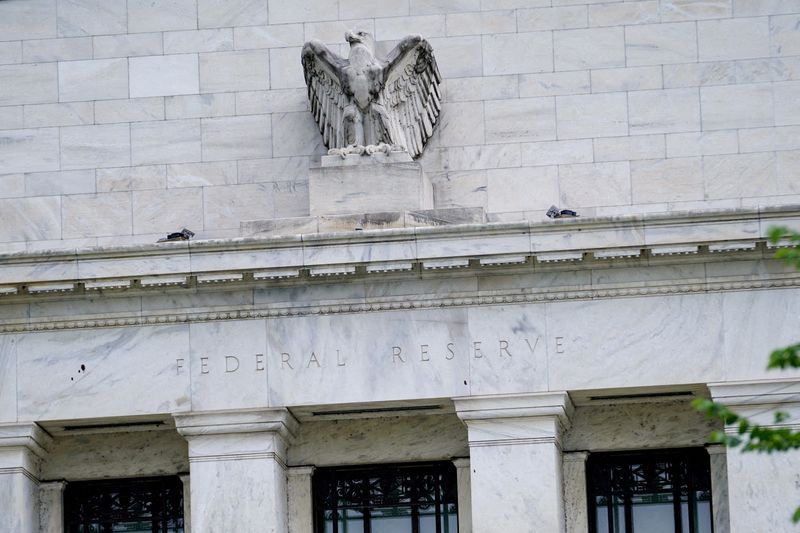By Ann Saphir and Michael S. Derby
(Reuters) -Slowly cooling inflation and a U.S. job market that remains strong but at risk of deteriorating give a green light for more interest-rate cuts in coming months, likely at a gradual pace, Federal Reserve policymakers indicated in remarks on Thursday that mirrored views of financial markets.
Markets strengthened bets the Fed would deliver a quarter-point rate cut at next month’s policy meeting after data showed consumer price inflation edged down to 2.4% in September from a 2.5% pace the prior month. A separate report showed a surge in weekly claims for unemployment insurance that economists attributed largely to a temporary blow from Hurricane Helene.
With inflation now near the Fed’s 2% goal, and the unemployment rate now at 4.1%, “we’re trying to freeze the dual-mandate performance basically exactly where it is right now,” Chicago Federal Reserve Bank President Austan Goolsbee told CNBC, referring to the Fed’s two mandates of price stability and full employment.
“The vast majority (of Fed policymakers) believes that over the next 12 to 18 months, conditions continue to slowly and gradually improve to something like target, and rates gradually come down a fair amount to something well below where they are today,” he said.
At an event at Binghamton University, New York Fed President John Williams said the timing and pace of rate cuts will depend on the data, but “based on my current forecast for the economy, I expect that it will be appropriate to continue the process of moving the stance of monetary policy to a more neutral setting over time.”
The Fed last month cut its policy rate by a bigger-than-expected half-of-a-percentage point in what policymakers have said is a “recalibration” of policy to better align borrowing costs with a big drop in inflation and bit of slowing in the job market since the central bank stopped raising rates back in July 2023.
Minutes of the Fed’s meeting released on Wednesday showed the decision had been a close call, and Goolsbee on Thursday said he expected more close-call meetings ahead.
The short-term benchmark rate is now in the 4.75%-5.00% range. On Thursday traders added to bets the Fed will deliver a quarter-percentage-point interest-rate cut next month and continue to lower the policy rate gradually until it gets to 3.5%, or possibly lower, by late next year.
That’s a slightly steeper pace of interest-rate cuts than financial markets had been pricing in before Thursday’s data, as traders retreated from what had been rising bets on a possible pause in rate cuts next month.
Economists had expected inflation to slow to 2.3% last month. From a month earlier, the CPI rose 0.2%, a larger increase than the 0.1% forecast by economists, boosted by shelter and food costs.

“The larger-than-anticipated gain in the September consumer price index doesn’t signal a reacceleration in inflation, nor will it deter the Federal Reserve from cutting interest rates by 25 basis points at its November meeting,” wrote Oxford Economics’ Chief U.S. Economist Ryan Sweet. “The Fed needs to continue to normalize interest rates to keep the economy on the path toward a soft landing.”
San Francisco Fed President Mary Daly late on Wednesday said that without a large reduction in rates she had been worried tight monetary policy could injure the labor market or break the economy. She now feels that smaller rate cuts ahead will likely be appropriate, with one or two reductions to come over the Fed’s last two meetings of the year.


